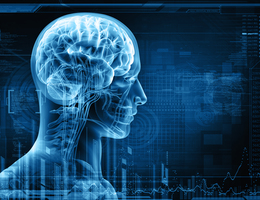 Questions
Questions
3. Are there risk factors for stroke that I can control?
4. How do I know I am having a stroke?
6. What are the main types of stroke?
8. Where can I go to learn more?
Answers
A stroke occurs when an artery in or leading to the brain is blocked or breaks open, starving brain cells of the steady blood flow they need to survive.
A mild stroke may cause no permanent damage, or it may cause limited damage such as minor memory problems or confusion in distinguishing left from right. A severe stroke can cause serious and permanent disabilities, such as paralysis on one side of the body, problems with thinking, learning, judgment and memory, emotional disturbances, or loss of speech or vision. A stroke can also be fatal.
Someone in the United States has a stroke every 40 seconds, according to the Centers for Disease Control and Prevention, and someone dies from stroke about every 3.25 minutes. Many stroke survivors have serious disabilities, including problems with speech, movement and memory.
3. Are there risk factors for stroke that I can control?
According to the National Institute of Neurological Disorders and Stroke (NINDS), major risk factors for stroke that you can control include high blood pressure, heart disease, high blood cholesterol and diabetes. All of these risks can be reduced with a healthy diet and regular exercise. Heavy alcohol consumption and smoking also increase the risk, but these are behaviors you can change.
4. How do I know I am having a stroke?
The symptoms of stroke are fairly easy to recognize and always call for immediate medical attention. They include:
- A sudden, severe headache with no apparent cause.
- Sudden dimness or loss of vision, especially in one eye.
- Sudden weakness or numbness of the face, arm or leg, especially on one side of the body.
- Difficulty talking or understanding speech.
- Unexplained dizziness, unsteadiness or sudden falls.
Sometimes stroke symptoms last only a few minutes, then vanish, leaving no noticeable effects. Known as transient ischemic attacks, one-third of people who have TIAs will have full-blown strokes in the future, according to NINDS.
Any stroke symptoms, no matter how short-lived, should be treated as an emergency. Treatment could prevent a full-scale stroke.
6. What are the main types of stroke?
The two main types of stroke are ischemic and hemorrhagic.
Ischemic strokes account for about 80% of strokes, according to NINDS. These strokes happen when an artery that supplies blood to the brain gets blocked, most often by a blood clot. A blood clot may form and grow in an artery that leads to the brain or form somewhere else in the body and then travel to an artery that leads to the brain.
The less common form of stroke, hemorrhagic, happens when an artery in or near the brain splits open. This can happen because of a weak or thin section of artery wall, or a section of artery that's become brittle from artery disease, or because of weak blood vessels inside the brain.
The most common treatment for stroke is medication, or drug therapy, according to NINDS. Medicines called thrombolytic agents, or clot busters, can stop an ischemic stroke by dissolving a blood clot that's blocking blood flow to the brain.
Strokes can also be treated with surgery to divert blood flow around a blockage, remove a blockage or close off a brain artery that's leaking.
The long-term effects of stroke are treated with rehabilitation. This can help people relearn basic skills such as walking, eating, dressing, bathing, communicating and handling strong feelings.
8. Where can I go to learn more?
To learn more about stroke, visit the Stroke health topic center. You can also read more about stroke at these websites:
Reviewed 2/1/2024